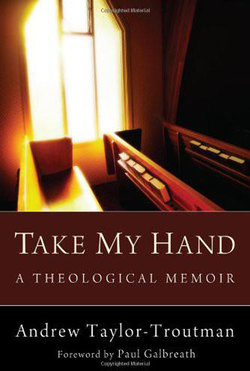Читать книгу Take My Hand - Andrew Taylor-Troutman - Страница 4
На сайте Литреса книга снята с продажи.
ОглавлениеForeword
WHEN I WAS A young boy, I would often follow my father to his workshop after dinner. Out in his old, wooden shed, I would watch him tirelessly take things apart and slowly put them back together. Along the way, he would offer comments and reflections on why it is important to care for and repair what you have. In spite of his tutelage, I did not really learn how to repair lamps, build a bookcase, or work on a car. What I did learn by spending time with him in his workshop was about the way he viewed life and how he viewed these tasks in relationship to his life. In many ways, these are far more important lessons than how to replace a socket in a broken lamp or change the sparkplugs in a car. What this time with my father gave me was a clearer sense of my father’s identity and his own understanding of vocation.
When I read through the pages of Andrew Taylor-Troutman’s memories of his first year as a pastor, I have a similar feeling of insight and discovery. This is the story of a growing sense of belonging between a pastor and a congregation and a deepening satisfaction with the daily tasks, challenges, and opportunities of a pastor in the context of a particular community. This is precisely why I think that this is a wonderful book not only for new pastors, but especially for members of congregations. Each chapter presents a sermon as a series of ongoing conversations: between a preacher and a text; between a preacher and a congregation (and broader community); and between a text and an ever-changing context. This lively conversation locates the weekly task of preaching within the daily events of life. Here, the pulpiteer is forced to come down from his/her high and lofty location and struggle with texts in light of the dynamics of congregational life. And what Andrew so carefully shows are the ways that these conversations also include the ghosts of the past that so often hover over this process in our churches.
Here, in a small, rural, historic church in western Virginia, the art of preaching as dialogue comes to life. As one who teaches preaching, I am delighted to have this real-life memoir of a recent student of mine. No matter how hard I try, I cannot possibly construct the richness, diversity, and complexity of congregational life that provides the context in which each week ministers rise up from the middle of congregations in order to speak of the possibility of encountering God in these odd stories which we call Holy Scripture and in the midst of our busy and messy lives. Even more important, in my estimation, is the ability of the minister to consistently model whether or not there is any truth in or connection to the claims that the gospel makes on our lives. On all of these accounts, this memoir succeeds in the art of practicing what it preaches.
Preaching as an ongoing dialogue and a relationship with a particular congregation are at the heart of what parish ministry is all about. The conversations that begin in our living rooms and over our dining tables shape how we hear and respond to Scripture and the ways that we live out this gospel in our community. These dialogues accompany us to our hospital rooms and support us in times of crisis. Here, Andrew points us to ways that all of us struggle to make sense of texts and contexts and how we can live them out together in a community of faith. At the same time, Andrew models for us how, in the midst of these conversations and challenges, we can grow into faith practices that sustain us and give us a deeper sense of awareness of our own identity and vocation.
Andrew shows how the simple, yet profound act of framing pastoral conversations as questions opens the door to discovery: What have you been praying about lately? Similarly, the art of preaching centers around a question: Where can we experience God in this text? Such an approach invites us all into the lifelong process of looking for and discovering God’s presence in our lives.
Several years ago when I was preaching each week in the congregation where I served as pastor, my spiritual advisor likened the work of writing sermons to the work in the shop that my father loved to do. Whether it was repairing a broken lamp so that light would once again shine, hammering together wood to support our family’s vast library, or slowly and lovingly restoring his old Model A Ford, these were the tasks that my father worked on while I listened to him reflect on life. I learned to think of my own sermons in similar ways: as the careful work of one who listens to texts, to the voices in the congregation and community, and to the ghosts of the past that haunt every church I know. In the end, this work is primarily a work of love: to care for these people in this particular place and time as one reflects out loud on the possibility that this text will help us see our lives together in a new way.
So I happily commend this book to you as one that will bring you insights into the difficult and demanding work of preaching. Even more importantly, though, I recommend this book as one that shows us ways to live out our calling as disciples of Jesus Christ in our own particular communities of faith.
Paul Galbreath
Professor of Worship and Preaching
Union Presbyterian Seminary
Richmond, Virginia
